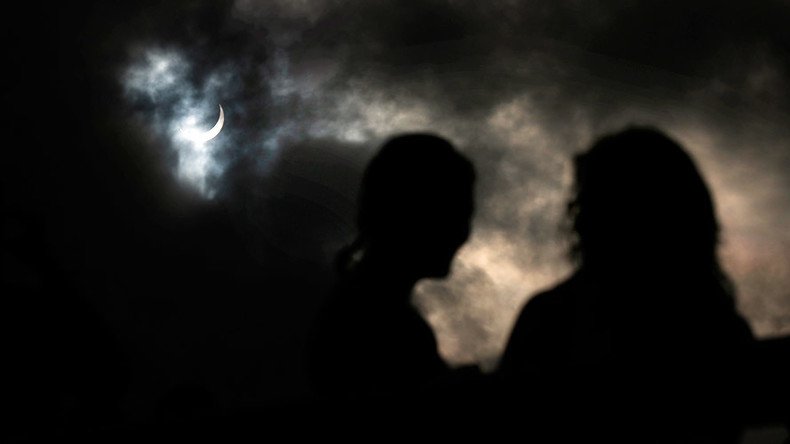Full solar eclipse will hang over West Pacific & Southeast Asia

A brief solar eclipse will take place, with visibility in Indonesia and other parts of Southeast Asia promising to be particularly strong. This time around NASA is sending a survey team there to measure a particular kind of light only available in the area during a full eclipse.
Rather confusingly, the total solar eclipse should be visible first Wednesday, then Tuesday, according to the New York Times. The reason for this is because the moon will cast its shadow over some of the Western Pacific first on Wednesday morning, then move over to be visible elsewhere on Tuesday afternoon.
Only a 90-mile stretch along Indonesia, Borneo and Sulawesi will lie in the so-called line of totality this year. This means they could experience blackouts sometime between 7 and 11am local time. In GMT, the eclipse will occur from midnight to 4am.
Leap back in time: NASA spots farthest galaxy, breaks cosmic distance recordhttps://t.co/XJ9ZpyrJAmpic.twitter.com/2eOxhtU6o8
— RT America (@RT_America) March 4, 2016
The upcoming show is set to last about four minutes.
“The cool thing for those who are going to be in the path of totality is that they are going to be able to see the outer atmosphere of the sun called the corona,” NASA solar scientist C. Alex Young told the Times. “This is only visible from the ground during a total solar eclipse,” he added.
READ MORE: Moon shadow: Whirling gas clouds of Jupiter set for close-up with Earth (PHOTOS)
Outside of this area, the menacing shadow will partially cover Hawaii, Alaska, Australia and South China.
NASA will be doing its thing, hosting the live stream over here. Happy skygazing, everyone.













